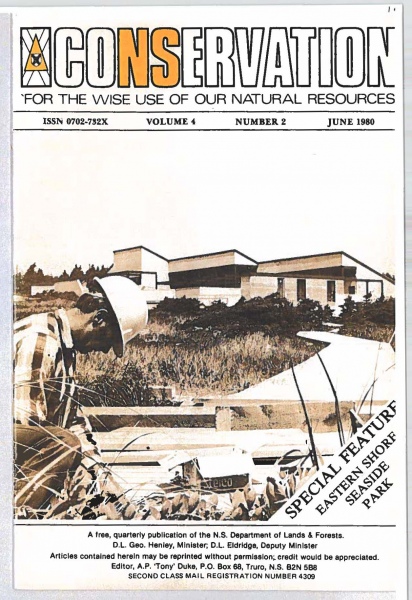Owl's Head is a coastal headland on the Eastern Shore of Nova Scotia/Mi’kmaqi. A portion of the headland (268 hectares/ 662 acres) is provincial Crown Land and has been managed as a provincial park since the 1970’s. Though Owls Head Provincial Park was never legally designated as a protected area, it has been proposed for designation in the Nova Scotia’s 2013 Parks and Protected Areas Plan (site #694).
Because of investigative reporting and freedom of information requests, we all learned of the backdoor deal to sell Owls Head Provincial Park to a private developer, for conversion into golf courses. The secret actions of the Department of Lands and Forestry staff, past and current Ministers, and Cabinet to dispose of a rare ecosystem home to a number of endangered species without public consultation are deplorable.
The shady process and potential outcome of these actions are unacceptable. Lands in the Parks and Protected Areas Plan were selected from the available pool of Crown land for their outstanding conservation values, based on extensive consultations with the public, the Assembly of Nova Scotia Mi’kmaq Chiefs, and other groups, including the forestry and mining industries. These lands have been vetted and are under a moratorium to prevent their destruction before designation. Owls Head is a place that must be designated, as per the Plan and public and rightsholder input.
There is a strong scientific and social case to protect the property too. The site hosts endangered species habitat (i.e., Piping Plover), and a globally rare ecosystem (Broom Crowberry coastal barren) – there are few places left in the province to protect these conservation values. Owls Head is also a piece of public land on the coast, in a province estimated to only have 5% of its coast protected for nature conservation and public enjoyment. The chance to preserve nature and public access on the coast is an exceptional opportunity and should not be foregone in favour of private development that could be done elsewhere.
Fortunately, the Crown has not yet sold the land. We are grateful that a grassroots group has formed to Save Owls Head, and we applaud their swift formation and efforts to date. EAC staff have been speaking with politicians and the media about this situation, and we will continue to try to stop any further efforts to remove Owls Head from the roster of areas slated for legal protection.
What to do? Individuals can write or call their local MLAs, cc’ing the Premier (premier@novascotia.ca), about this outrageous situation. There are excellent templates available for guidance (here and here). Include the government’s stated commitment to the Parks & Protected Areas Plan, and its goal of legally protecting at least 13% of Nova Scotia’s land mass for nature conservation.
Owls Head and the more than 60 other sites listed in the Parks and Protected Areas plan need formal protection now. In the age of the climate crisis, it is not the time to reduce options for nature conservation, nor are the sites proposed for designation the group of lands to pluck from. The Province committed to 13% land protection but has been very slow in meeting that minimal goal. Science and public expectation now surpass this benchmark – the Government of Canada has already committed to 17% land protection by the end of 2020, and 30% land protection by 2030. Land conservation is an outstanding way to address both climate change and biodiversity loss, and it provides a multitude of public benefits.
Now is the time for more land conservation, not less.
Historical footnote: In the late 1970s, the Department of Lands and Forests worked with a committee of local residents to plan a system of parks on the Eastern Shore (a plan for a national park in the same area had failed). See this article from a 1980 publication by Lands and Forests about the Eastern Shore Seaside Park System. It shows Owls Head as a Natural Area within the Park System, to have very little park development.

